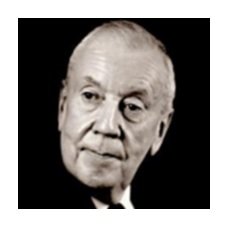sugar land winds
PROGRAM NOTES
Malcolm Arnold
March from “A Little Suite” by Malcolm Arnold
Arranged by Peter Sumner
It is well-known that the “democratic” brilliance of Arnold’s scoring results from the diligent application of his intimate inside knowledge of the symphony orchestra. March from “A Little Suite” is a cracking quick-fire march that needs little comment, other than the observation that Arnold’s quick-witted tunefulness, which was to stand him in such good stead in his film career, is well in evidence.
John Philip Sousa
“King Cotton” March
(The Complete Marches by John Philip Sousa, Vol. 3, No. 51)
It is a curious fact of the music world that marches written for fairs and expositions almost always fade into oblivion. Two notable exceptions are Sousa’s “King Cotton” and “The Fairest of the Fair.” The former was written for the Cotton States and International Exposition of 1895, and the latter for the Boston Food Fair of 1908.
Sousa and his band had great drawing power at fairs and expositions and were much sought after. But officials of the Cotton States and International Exposition in Atlanta attempted to cancel their three-week contract with the Sousa Band because of serious financial difficulties. At Sousa’s insistence they honored their contract, and at the first concert they became aware of their shortsightedness.
The Sousa Band did indeed bring the exposition “out of the red,” and the same officials who had tried to cancel Sousa’s engagement pleaded with him to extend it. “King Cotton” was named the official march of the exposition, and it has since become one of the perennial Sousa favorites.
Giacomo Puccini
Nessun Dorma from “Turandot,” composed by Giacomo Puccini, arranged by Merlin Patterson
Nessun Dorma (Ital.: [nesˌsun ˈdɔrma]; Eng.: “Let no one sleep”) is an aria from the final act of Giacomo Puccini’s opera “Turandot,” with text by Giuseppe Adami and Renato Simoni, and is one of the best-known tenor arias in all of opera. It is sung by Calaf, “il principe ignoto” (the unknown prince), who falls in love at first sight with the beautiful but cold Princess Turandot.
Although Nessun Dorma had long been a staple of operatic recitals, Luciano Pavarotti popularized the song beyond the opera world in the 1990s, having rarely sung the role of Calaf on stage, following his performance of it for the 1990 FIFA World Cup in Italy, which captivated a global audience. Pavarotti and Plácido Domingo released singles of the aria, with Pavarotti’s reaching number two in the United Kingdom, and it appeared on “The Three Tenors in Concert,” the best-selling classical album of all time.
Robert Russell Bennett
Suite of Old American Dances
“Suite of Old American Dances” was inspired after the composer heard a performance by the Goldman Band in 1948. The original title was “Electric Park,” an amusement park Bennett went to while growing up in Kansas City. Each movement of the work is based on a dance from the beginning of the twentieth century.
The Cakewalk dance originated on the Southern plantations. The dance of “strut” was danced to jig-like banjo/fiddle music, usually done by a couple who, with a backward sway, strutted in a medium high step or low kicking fashion.
Although the title of the dance suggests that its roots lie in Scotland, the Schottische is actually a German variant of several Bohemian dances that later developed into the polka. The Schottische features quick shifts from foot to foot and striking of the heel. These movements resemble the Scottish reel and may have inspired the name. The dance came to the United States by way of England when polka dancing became the rage among continental society in the 1840s. The music for the early schottische was usually written in 2/4 time, and many describe the dance as simply a slow polka.
The Western One Step is a somewhat misleading title. As Frederick Fennell points out, “The composer informed me that this is also a dance known as the Texas Tommy, an obviously bright-eyed tune with an equally bright-eyed tempo.” Little is known about the Texas Tommy, one of the obsolete forms of the one step. This dance, from the early 20th century, is believed to have originated in brothels and saloons, where ladies of the evening were known as “tommies.”
John Philip Sousa
“Hands Across the Sea”
(The Complete Marches by John Philip Sousa, Vol. 4, No. 56)
When played for the first time by Sousa’s Band in the Philadelphia’s Academy of Music on April 21, 1899, “many feet were beating a tattoo.” The band was obliged to repeat it three times. Hands Across The Sea was off to a good start, and it has since remained a standard in band literature.
The march was addressed to no particular nation, but to all of America’s friends abroad. It has been suggested that Sousa was inspired by an incident in the Spanish-American War, in which Captain Chichester of the British Navy came to the support of Admiral Dewey at Manila Bay. A second (and more likely) source is a line by Frere, which was printed on the front cover of the sheet music: “A sudden thought strikes me — let us swear an eternal friendship.”
Roger Nixon
Elegy and Fanfare-March, by Roger Nixon
Elegy and Fanfare-March began as a piano piece, but its potential as a band composition was soon realized by Roger Nixon. In 1961, the work was performed by the University of Michigan Symphony Band on its tour of the Soviet Union and satellite countries. During the tour, conductor William D. Revelli wrote the following to the composer: “Your Elegy and Fanfare-March is being played almost nightly for our Soviet audiences, and everywhere it is achieving great receptivity. The Russian people are great band fans and have evinced tremendous enthusiasm for your work... the most popular contemporary piece we are playing on this tour.”
John Williams
Midway March, composed by John Williams, arranged by Paul Lavender
The Battle of Midway was a victory that some say was the turning point of the war between the United States and Japan during World War II. The jaunty nature of the march celebrates the victory but omits the high cost of a battle. The victory was so important to American morale that the name found its way into the lexicon of the country. Chicago’s Midway Airport, for example, was named for the battle. Key to the victory was the breaking of the Japanese Naval encryption codes. The war had been going badly for the United States and the Japanese planned to deliver a devastating blow to finish off the American fleet at Midway. However, due to United States Signals Intelligence breaking the Japanese encryption code, the Americans were able to plan a counterattack that led to eventual victory, although with great loss of American life.
John Williams references the code in his march with a repetitive set of staccato notes in the brass. The march was composed in 1976 as part of the soundtrack for an epic movie. Despite its big-name cast, the movie was not a smashing success. Regardless of the success of the film, the score to Midway March produced one of Williams’s most riveting and powerful marches.
Frank S. Perkins
Fandango, composed by Frank S. Perkins, arranged by Floyd Werle
Fandango is a song and dance that originated in Spain and Portugal in the early eighteenth century. By the end of the eighteenth century, it had become popular as an instrumental form for serious composers. The dance itself expresses the passion of the dancers, who often taunt each other by following the other’s steps or by using gestures. Therefore, it is synonymous with a quarrel or an argument. Many variations of the dance began to spring up as its popularity hit Europe’s courts. The big fandangos often started slowly and gradually increased in speed. The little fandangos were much more lively and festive. Frank Perkins’s version is a “fandango grande.”
John Philip Sousa
The Stars and Stripes Forever
(The Complete Marches by John Philip Sousa, Vol. 3, No. 53 )
With the possible exception of “The Star Spangled Banner,” no musical composition has done more to arouse the patriotic spirit of America than The Stars and Stripes Forever, John Philip Sousa’s most beloved composition. Symbolic of flag-waving in general, it has been used with considerable effectiveness to generate patriotic feeling ever since its introduction in Philadelphia on May 14, 1897.
The march’s reception was only slightly above average for a new Sousa march. It grew gradually in public acceptance, and with the advent of the Spanish-American War the nation suddenly needed such patriotic music. There was a vigorous response wherever it was performed, and audiences began to rise as though it were the national anthem. This became traditional at Sousa Band concerts.
With the passing years the march has endeared itself to the American people. The sight of Sousa conducting his own great band, in his most glorious composition, always triggered an emotional response. The piece was expected — and sometimes openly demanded — at every concert of the Sousa Band. Usually, it was played unannounced as an encore.
Sousa was very emotional in speaking of his own patriotism. When asked why he composed this march, he would insist that its strains were divinely inspired. The composition was actually born of homesickness, as Sousa freely told interviewers, and some of the melodic lines were conceived while he was still in Europe.
By almost any musical standard, The Stars and Stripes Forever is a masterpiece, even without its patriotic significance. But by virtue of that patriotic significance, it is by far the most popular march ever written and its popularity is by no means limited to the United States. Abroad, it has always symbolized America. It has been recorded more often than practically any other composition ever written. Looking back at the march’s astonishing success, it is difficult to believe that the publisher had shown little faith in it and that he had even suggested to Sousa that “Forever” be stricken from the title.









